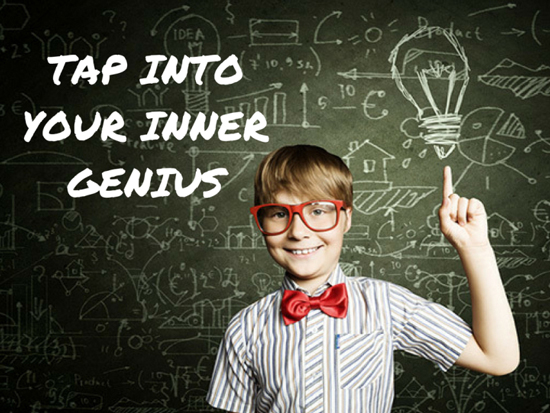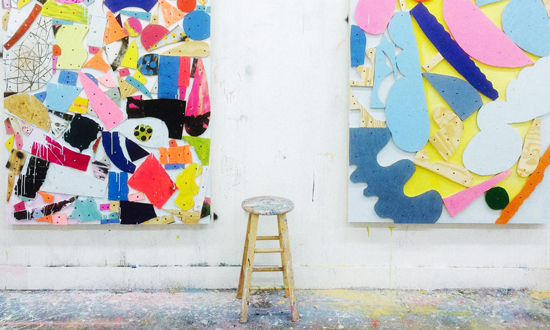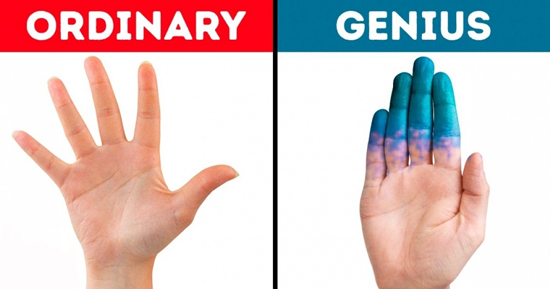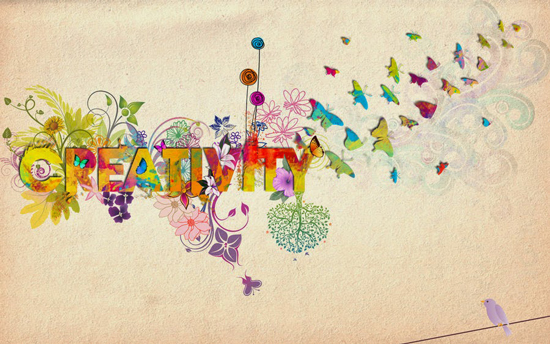Enabling Genius: How to Tap into Flow States and Unlock Your Limitless Potential Getting into Flow

A further aspect of developing and expressing your genius is to increase your skill at getting into a flow state. Flow states, widely popularized by researcher Mihaly Csikszentmihalyi, are states of heightened mental and intuitive awareness, creativity and performance characterized by the slowing of time, intense focus in the present moment and superhuman intelligence or physical ability, depending on the situation. Getting into flow is not something that can be bottled and sold with a guarantee of satisfaction for every occasion.
Sometimes interference emerges that is too great, like the pressure of competition or a major presentation. That said, getting into a state of flow is a skill, and the more you practise it and the more you achieve it, the better able you will be to understand how to achieve that state of awareness in the future.
That also has a broader impact in enabling your genius. Irena O’Brien writes:
“Flow, by definition, implies a growth principle. One of the conditions of flow is a balance between the demands of the task and the individual’s skill level. Usually, this means that the work should be somewhat challenging. Flow is rewarding and motivates people to engage in the activity again and again and to seek increasing levels of challenge, thereby improving their skills and abilities.”
The science and the experience of those who regularly experience that state of consciousness tell us that there are a number of things you can put in place, do and practise that will significantly increase the likelihood of a flow state.
Planning and Preparation for Flow
Because the experience of flow can be so profound many people think that getting into that state of awareness is a matter of chance – or a gift – and so don’t do the work that makes it more likely. Just pitch up on the day and it will not happen. Most people who are expert performers plan, some with an almost obsessive zeal, for the flow state. Nothing is too small to be looked at, planned for – equipment, approach, clarity of intent and outcome, seating arrangements. In addition to the more obvious planning they often will be mentally rehearsing a few days beforehand visualizing specific situations or techniques, rehearsing key sentences.
Irena O’Brien, in her article The science of Flow, refers to three “antecedents” of a flow state, prerequisites if you like:
1. The goals are clear, but to be overly concerned with the goal can interfere with performance.
2. Feedback is immediate – knowing how well one is doing provided by the task itself or by supervisors or co-workers.
3. There is a balance between skill and challenge – the optimal amount of challenge is subjective – what is challenging for one may be easy for the other.
With these in mind, here are some of the things that are worth considering for how to achieve a flow state:
– Is the activity an expression of your Unique Individual Genius? If it is, how will it impact the goals you set and your approach?
– Understand the inherent meaning in the task. What is the broader purpose in doing this?
– Identify clear performance and learning goals for the task or activity. Try to make the performance goals sufficiently challenging to engage your interest but not so challenging or boring as to cause distraction.
– Identify your approach to the task or activity.
– Within your approach is there anything, a skill or an element of your strategy, which you need to practise deliberately to improve it?
– How are you going to rehearse?
– Finally, a key part of planning for a state of flow is to identify any possible interference and to find means for eliminating or reducing them.
For example, if you are a writer, you may plan your writing activity to increase the possibility of a flow state – some days it happens and some it does not, but you are getting better at it. Let’s say your writing genius is “storyteller”. It means you try to find the story and then you want to communicate it. This is identifying the basic building blocks and putting them together in a logical order so that the reader’s understanding is built up, layer upon layer. You may enjoy, for example, the poetry of W. B. Yeats for the rhythm in the language so this, and a capacity to make distinctions, is what you would want your stories to look and sound like in written words.
Deliberate practice takes the form of free writing with a pencil on paper, writing anything that comes to mind and getting a sort of “flow of words” moving within you. To practise making distinctions, identify something, usually a concept or an idea, and ask yourself repeatedly “What is it?” and “What is it not?”.
In our example, the inherent meaning in the task may be most often associated with your desire to help others find their autonomy or authority and to live their lives from that source.

As you prepare for a specific writing task, or any activity that may engender a flow state, remind yourself of the elements mentioned above and then get clear about the specific intent in the piece you are to write – what you want the reader to be thinking and feeling or, perhaps, asking at the end. Set an objective which is usually to complete a section rather than a number of words. Then turn off the phone and email.
Craig W. from the perspective of a tennis coach, one of his many roles, writes:
“The champion is defined by someone who goes the extra mile, who has something that extra little bit special. They understand deeply that 100% perfection may not exist, yet they are nevertheless mindfully absorbed in a relentless quest for perfection to get as close to the 100% flow state as is humanly possible. Equally they understand that it may not be realistic to be in the zone all the time, but they can certainly increase their chances of time spent in the zone by doing a number of factors:
– They do the basics extremely well: ordinary things consistently done create extraordinary results.
– They know what they need, and have routines and teams that support and empower their performance.
– They are true to themselves, they are not using excess energy constantly trying to prop up their identity and be someone else.
– They are energy efficient; they understand that the person with the most energy wins the game.
– To this end they are coherent: they have a strong order of alignment in their daily living: their clothes, their choices, and their team that supports them, all fully and powerfully aligned (boat & vessel), look at the unity and power of the Djokovic camp or Murray team.”
A true champion operates from a space of relaxed concentration and non-judgemental awareness. That is to say, they detach themselves from judging what they do while they do it, rather they are able to move beyond this into a noticing, a witnessing of their own performance. Note well, that while this implies the bad shots are not you, hence do not be discouraged by them (it’s all part of an unfolding process), it also implies the good shots are equally not you. To truly get this requires great humility and poise, but it empowers the greatest likelihood of pure flow state showing up on the court.
Exercise: Following Interest
As an inner game coach one of the techniques that might be used to help someone get into a flow state is called “following interest”. If you are with someone at the golf range, a conversation might go a bit like this:
You: Hit a few balls and then tell me what you notice.
Golfer: My swing feels a bit jerky.
You: Hit some more and tell what you notice this time.
Golfer: My hips are turning.
You: Hit some more and tell me what you notice.
This sequence of questions and answers would happen three or four times and then:
You: You have mentioned the jerky swing, your hips turning and some discomfort in your shoulders. Hit a few more balls and tell me which of those three things is most interesting.
Golfer: The turning in my hips.
You: Hit a few more and tell me what you notice about the turning in your hips.
Golfer: Sometimes there’s quite a lot of movement and others there’s almost none.
You: Tell me for each shot you take how much turning there is. Use a scale of one to five, one is almost no turning, five is a lot.
Golfer: Two.
You: Next ball.
Golfer: Four.
At this point the golfer is focused and in a flow state. You can help the player get into that awareness by establishing what is being noticed, what is interesting, and then getting the player to select the thing that stands out the most. Do not direct their attention, but simply follow where their attention is drawn. You might notice that this process of entering the flow state as described above with the golf lesson is also the process that helps the learner access his or her innate capacity to learn. This is the process of learning through awareness.
You may think of this as a sort of continuum of attention. The first stage is unconscious awareness: things are happening and you can be aware of them or unaware but you are not consciously paying attention to them. As we move across the continuum there is noticing; this is where you become conscious of what is in your field of attention, either as a function of choice or because the object is in itself compelling. Then there is focused attention, where your attention is fixed on the object and there is little or no room in your attention for anything else, a key piece of most flow states. Sometimes this can deepen into a state of flow or absorption – all your attention is with the object and it can feel that observer and object are one.
Exercise: The Continuum of Attention

Unconscious Awareness >> Noticing >> Focused Attention >> Absorption
One way into the state of flow is to start to notice what’s happening. This can be in almost anything; a meeting, a discussion, a problem, a game. Then ask yourself what’s most interesting or, sometimes an easier question to ask is “What stands out?” and try to bring your attention to whatever that is. Then ask yourself what is most interesting about the focus. Attention deepens. In Focus: The Hidden Driver of Excellence, Daniel Goldman writes:
“There are several doorways to flow. One may open when we tackle a task that challenges our abilities to the maximum – a ‘just manageable’ demand on our skills. Another entryway can come via doing what we are passionate about; motivation sometimes drives us into flow. But either way the final common pathway is full focus. No matter how you get there, a keen focus jump-starts flow.”
Getting into the state of flow is a skill that can be developed and you can learn how to achieve flow states. In his book on Psychosynthesis, What We May Be, Piero Ferrucci, a student of Roberto Assagioli (Italian psychiatrist and pioneer in the fields of humanistic and transpersonal psychology), describes many exercises to develop your ability to focus, which is a key element, such as these:
“Close your eyes and visualize the following:
A pen slowly is writing your name on paper.
A single digit number. The substitute a two-digit one, then a three-digit one and so on until you reach the limit of the number of digits you can retain. Keep that number in front of your inner eye for two minutes.
Various coloured shapes: a golden triangle, a violet circle, a blue five-pointed star, and so on.”
Which brings us to mindfulness. Mindfulness, according to Wikipedia, “is the intentional, accepting and non-judgmental focus of one’s attention on the emotions, thoughts and sensations occurring in the present moment, which can be trained by meditational practices.” As a mean of developing one’s capacity to focus and achieve a flow state, it is excellent. There are courses everywhere, even online.
Genius Thinking
There is this idea that some people have intelligence – and others do not. For some reason this one did not get the scrutiny it deserved. That the few are the inheritors of intelligence is an idea that is, in large part, perpetuated by the education system and by the unequal distribution of wealth. The ability to pay for an education or the good fortune to be selected for a great school, such as the British Grammar Schools of the past that then lead to “Oxbridge” or a good university, produces people that we might think of as intelligent. Again, as with the flow states, it’s the process. The process here is the learning experiences provided by the schools and universities. You may be thinking of this as “the intelligence trick” (to borrow from the title of Baggini’s book The Ego Trick).
There are two parts to the trick. The first, what we have perpetrated on ourselves, to our own detriment, is that we have either been tricked, or tricked ourselves, into thinking that intelligence is a given, fixed quotient – some have it and some don’t. The second part is to suggest that intelligence is in some large part a trick. A technique. Something that can be learned. The word intelligence itself provides a clue as to how to get started in developing intelligence: the Latin roots of the word are inter (between) and legere (to choose): to choose between – a big part of intelligence is the ability to make a distinction between one thing and another. And, just like how to achieve a flow state, that is something that can be learned and practised.
The numbers of people that think they are not intelligent is huge. In most cases it is not about some missing mental “horsepower”, it is simply that they have not learned how to think. For example, for those who study architecture, the unexpected bonus may be a development of their thinking ability. The process of developing a concept from a sketch to a detailed set of working drawings forces the students to resolve often conflicting aesthetic and functional or technical problems and the best way to do this is with a pencil and paper, drawing from different angles. In the process of doing this, one is forced into a state of flow, absorption and focus, the surrounding world disappears and insight comes without effort.
A further aspect of thinking is that we often do not trust our thinking – we create interference, preventing us from expressing genius and tapping into a flow state. We want to know what someone else thinks, a teacher or a boss or simply continually second guess ourselves.
Genius thinking is thinking in flow. Because fear and doubt are (mostly) eliminated, because there is less interference, there is greater clarity of thought in that state of awareness. It is more intuitive and creative – when intuition or creativity is required. Genius thinking is more than cold logic, but it is that too. It embraces and acknowledges feeling, imagination and desire.
What follows are four ideas that help induce genius thinking: the idea that thinking unfolds the importance of simply noticing, how to focus your thinking and three positions from which to view a situation.
Thinking Unfolds

Imagine you are flying into Austin, Texas and are looking out the window as the plane starts its descent. You start thinking about thinking and how it works, your mind slightly adrift after a long flight. You notice the Colorado River below taking long sweeping, flowing turns to the left and right as it makes its way towards Austin and then on to the Gulf of Mexico. You may reckon, like some kind of crazy engineer, about the huge waste of time and energy lost in the large meanderings of the river and that it would be far better to build a canal, straight from source to sea.
Something starts knocking at the doors of your consciousness. And you keep on thinking – it dawns on you that the river is in fact following a straight line, just not one that is obvious from thirty thousand feet. At ground level, if you could get far enough away to see it, you would notice that the river flowed in a pretty straight line from high to low. And you might also think that it was following the path of least resistance as it flowed around rock and higher ground rather than trying to plough straight through. Almost as if the water had its own logic and was in its own flow state – one that would make Mihaly Csikszentmihalyi proud.
The knocking grows more persistent. What if our capacity to think had its own internal logic? What if thinking unfolds? Maybe we could trust our thinking, trust the process, the unfolding.
Tapping into genius (and flow states) requires that we trust our thinking and this means allowing it to unfold. It is by this means that we maintain the process of construing.
The Fine Art of Noticing
Noticing is the “not trying” of thinking. Trying is a big interference. Trying in the state of flow and physical activities almost always induces tension and stiffness, which will lead to a performance that is inefficient, inaccurate and inelegant. Trying to think involves frowning, pulling your eyebrows towards each other and holding the pencil ever more tightly. Trying to write a poem seldom works. Rather you set free your imagination and let the words flow.
Trying acts as a magnet for fear and doubt and thus brings evermore interference into the mind. Again, noticing is the “not trying” of thinking. The trouble is that, having noticed, our minds flip immediately into judgment, criticism, and problem solving or looking for an angle through which we might benefit. This takes us out of the flow state. We don’t rest with the simple act of noticing. As a consequence we decide and act without all the information. Through resting with noticing we can inhibit the knee-jerk response, we can take the time to check out our feelings or put ourselves in the other person’s shoes. Noticing allows for greater objectivity, more distance.
Floodlight and Spotlight
There are a number of means of managing one’s thinking. One is called “floodlight and spotlight”. Floodlight comes first. Floodlighting sheds light on the whole territory and into every nook and cranny. It includes what one notices, what one thinks about, what one intuits imagines, feels and desires. Floodlight is followed by the spotlight which is “What stands out the most from everything?”, “What is most interesting?”. A question that Cliff Kimber, mentioned earlier, asks frequently is: “What do you need to think clearly about?” Spotlight. If you can find the answer, you are half way to resolution or insight.
Let’s go back to the example when you are a writer. When faced with the problem of simplifying the material a book, you can create a mind-map on a sheet of paper as big as you want, and begin to note down all the things that came to your mind. You may then go through all your notes and also all the notes that your colleagues had created. Add all this to the mind-map. Have it in your mind that you want, and would receive, clarity or insight. Start to highlight certain things and to link things together. Eventually you will see that thinking unfolds and unfolds most elegantly in a state of flow, when you are not trying.
Three Position of Genius

Geniuses have been shown to have the capacity to see the world from three different perspectives – the three positions of genius. This was stated by Judith DeLozier and John Grindler who, with Richard Bandler, were early developers of the Neurolinguistic Programming model (NLP). NLP is an approach to communication, personal development and psychotherapy developed in the United States in the 1970’s.
Making an analogy with a tennis court, position one is that of the player engaged in the game, the experience, concerned with one’s own thoughts, feelings and activities. Another position is when the player is looking at the situation from his opponent’s point of view, sits in his shoes and tries to grasp what he must be experiencing, thinking and feeling. From this position, the player might gather information about how to adjust his strategy. Finally, the third position is the one of the umpire. The umpire’s chair in much taller than a normal chair affording a good view of the whole court, the players, and the surroundings.
Position Three is to imagine oneself in the umpire’s chair to gain an overview, to get some distance and objectivity. You might now imagine yourself in a difficult meeting such as a negotiation and being in position one, concerned about your aims and needs in the situation. You might then put yourself in the shoes of your opposite, and ask yourself: “What are their needs and aims, how are they feeling right now?” Then you might imagine yourself as a fly on the wall, and ask yourself “What’s the dynamic here?”, “How is the relationship between the key players?”. These questions will produce new information – and often times flow states as well – allowing you to manage the meeting more effectively. This process becomes even more powerful when you combine noticing and the floodlight/spotlight technique with the three positions of genius.
This article has not the intention to cover all, or even the larger part of what it takes to enable the state of genius on yourself, but rather to bring to attention some really key matters: developing autonomy, achieve flow state, and genius thinking. These three combined with the identity, desire, mental state and mind-set are a firm foundation for genius states to appear in your being.
yogaesoteric
September 21, 2017
